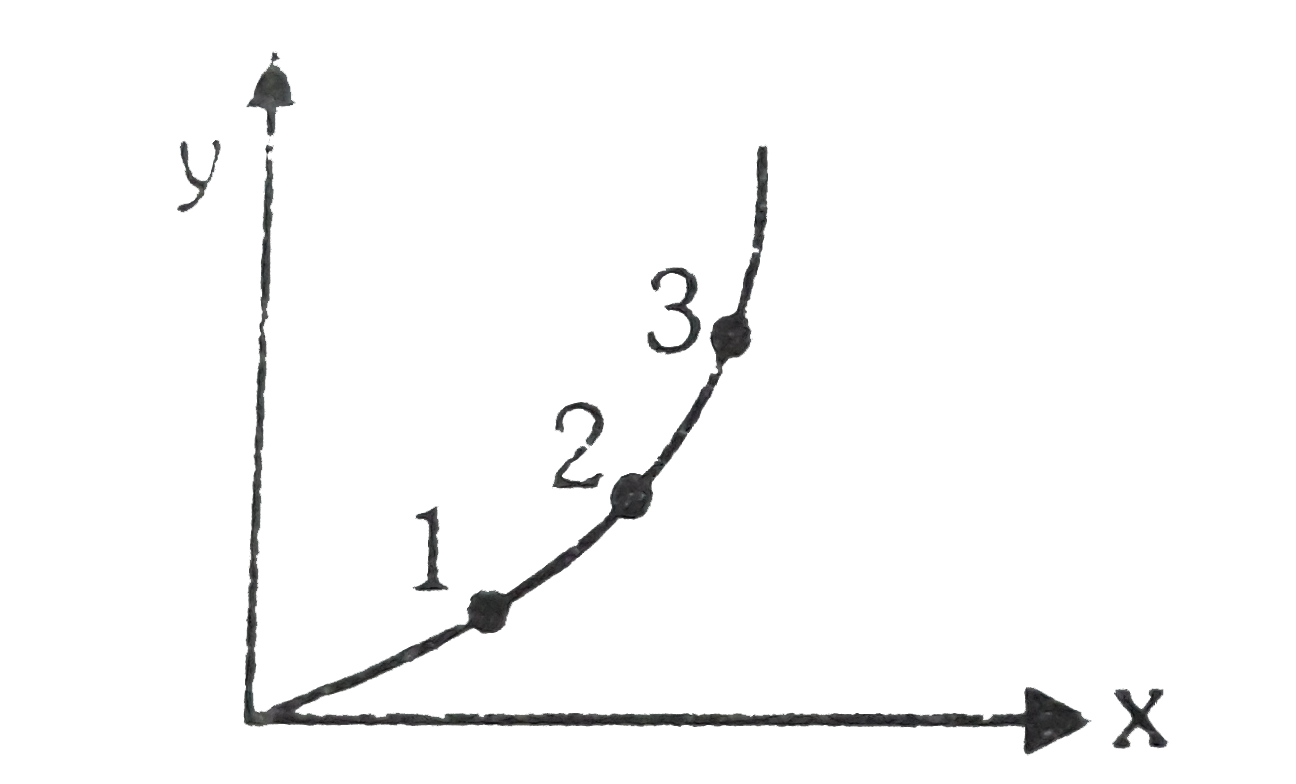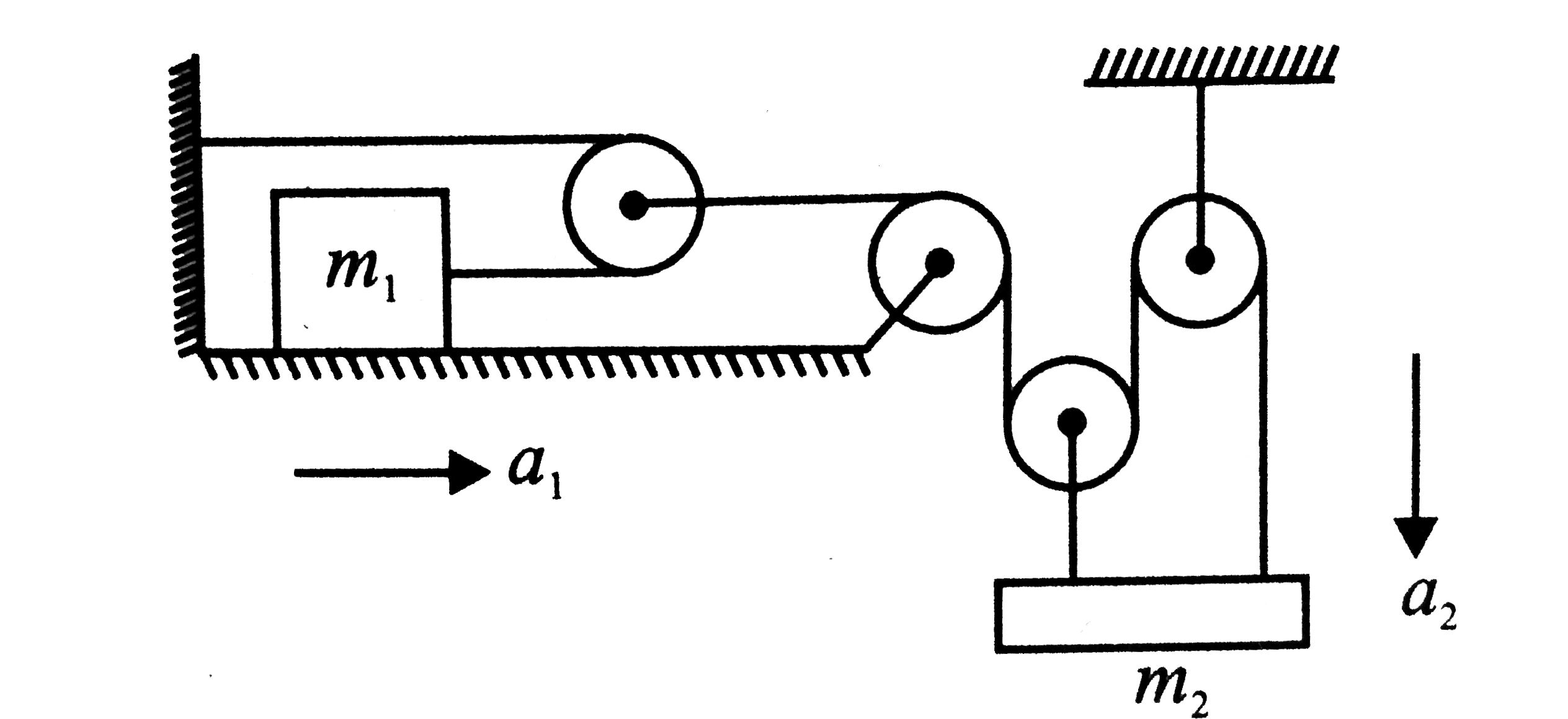In the shown diagram m1=m2=4kg and m3=2kg. Coefficient of friction between m1andm2 is 0.5. The mass m1 is given a velocity v and it just stops at the other end of the mass m1 in 1 sec. Let a1anda2anda3 be the acceleration m1,m2andm3 respectively, then :
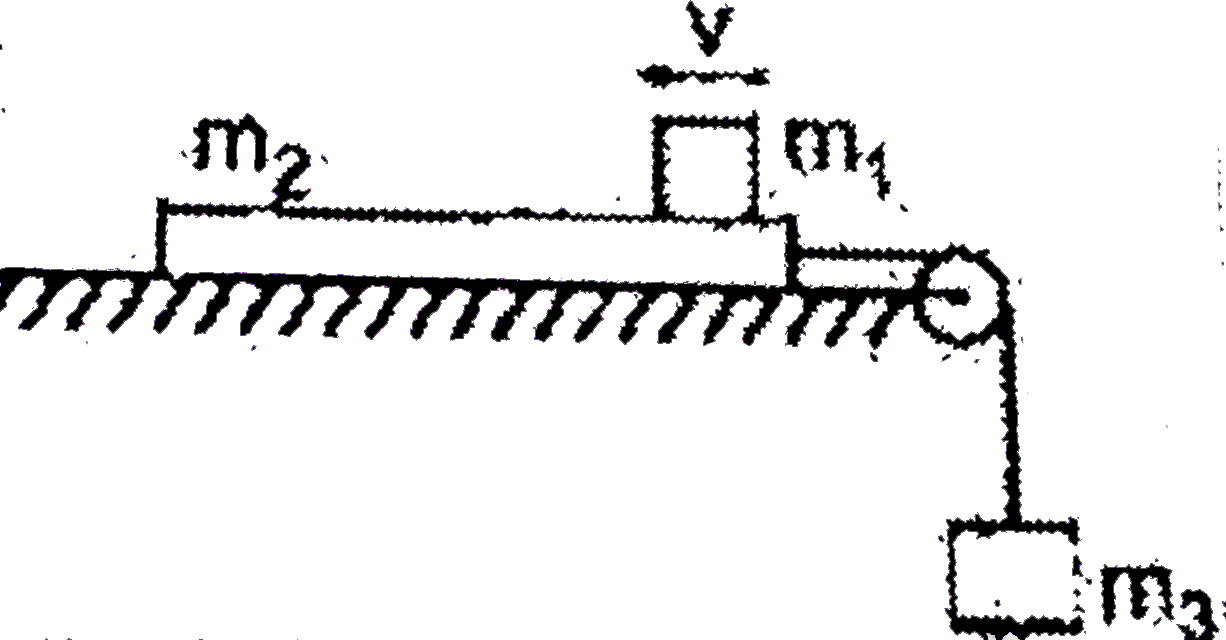
for t<1sec,a1=5m/s2,a2=a3=13m/s2
for t<1sec,a1=5m/s2,a2=a3=0
the value of v is 5m/s
for t>1sec,a1=a2=a3=2m/s2
The correct Answer is:a,c,d
Step by step video, text & image solution for In the shown diagram m_(1)=m_(2)=4kg and m_(3)=2 kg. Coefficient of friction between m_(1) and m_(2) is 0.5. The mass m_(1) is given a velocity v and it just stops at the other end of the mass m_(1) in 1 sec. Let a_(1) and a_(2) and a_(3) be the acceleration m_(1),m_(2)and m_(3) respectively, then : by Physics experts to help you in doubts & scoring excellent marks in Class 11 exams.
Topper's Solved these Questions
- BOOK - ANURAG MISHRACHAPTER - FORCE ANALYSISEXERCISE - Level-349videos
FORCE ANALYSIS
- BOOK - ANURAG MISHRACHAPTER - FORCE ANALYSISEXERCISE - Matching type13videos
FORCE ANALYSIS
- BOOK - ANURAG MISHRACHAPTER - FORCE ANALYSISEXERCISE - level 1103videos
FORCE ANALYSIS
- BOOK - ANURAG MISHRACHAPTER - DESCRIPTION OF MOTIONEXERCISE - Level-334videos
DESCRIPTION OF MOTION
- BOOK - ANURAG MISHRACHAPTER - IMPULSE AND MOMENTUMEXERCISE - matching3videos
IMPULSE AND MOMENTUM
Similar Questions
Knowledge Check
- Question 1 - Select One
In the figure shown m1=5kg,m2=10kg & friction coefficient between m1&m2 is μ=0.1 and ground is frictionless then :
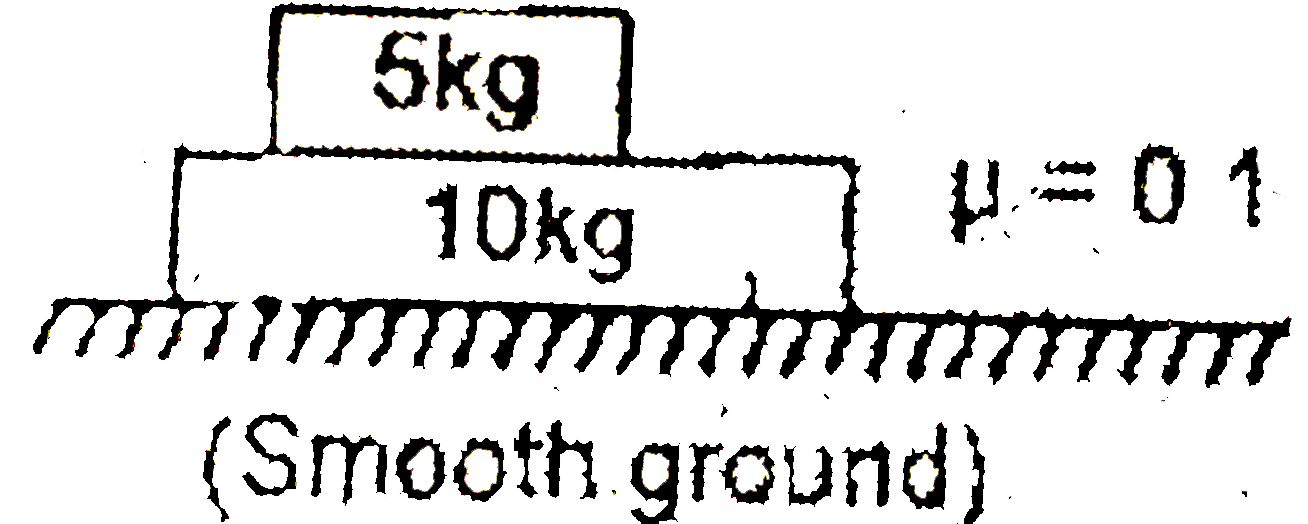 AIf a horizontal force F=20N is applied on m1 then the friction force acting on m2 is 5 N in the direction of FBMaximum amount of horizontal force that can be applied to m2 such that there is no relative motion between blocks is 15 NCIf a horizontal force F=20N is applied on m2 then friction force acting on m1 is 20/3 N in the direction of applied forceDMaximum amount of horizontal force that can be applied to m1 such that there is no relative motion between blocks is 8 N
AIf a horizontal force F=20N is applied on m1 then the friction force acting on m2 is 5 N in the direction of FBMaximum amount of horizontal force that can be applied to m2 such that there is no relative motion between blocks is 15 NCIf a horizontal force F=20N is applied on m2 then friction force acting on m1 is 20/3 N in the direction of applied forceDMaximum amount of horizontal force that can be applied to m1 such that there is no relative motion between blocks is 8 N - Question 2 - Select One
In each case m1=4kg and m2=3kg. If a1 and a2 and a3 are the respective acceleration of the block m1 in given situation, then
 Aa1>a2>a3Ba1>a2=a3Ca1=a2=a3Da1>a3>a2
Aa1>a2>a3Ba1>a2=a3Ca1=a2=a3Da1>a3>a2 - Question 3 - Select One
If m1=10kg,m2=4kg,m3=2kg, the acceleration of system is
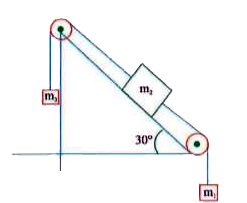 A5g/2B5g/3C5g/8D5g/14
A5g/2B5g/3C5g/8D5g/14
In the adjacent figure, all the pulleys are frictioniess and massless, all the stringes are also massless. The relation between a1,a2 and a3 is (where a1,a2 and a3 are the acceleration of masses m1,m2 and m3 respectively in the direction as shown in the figure)
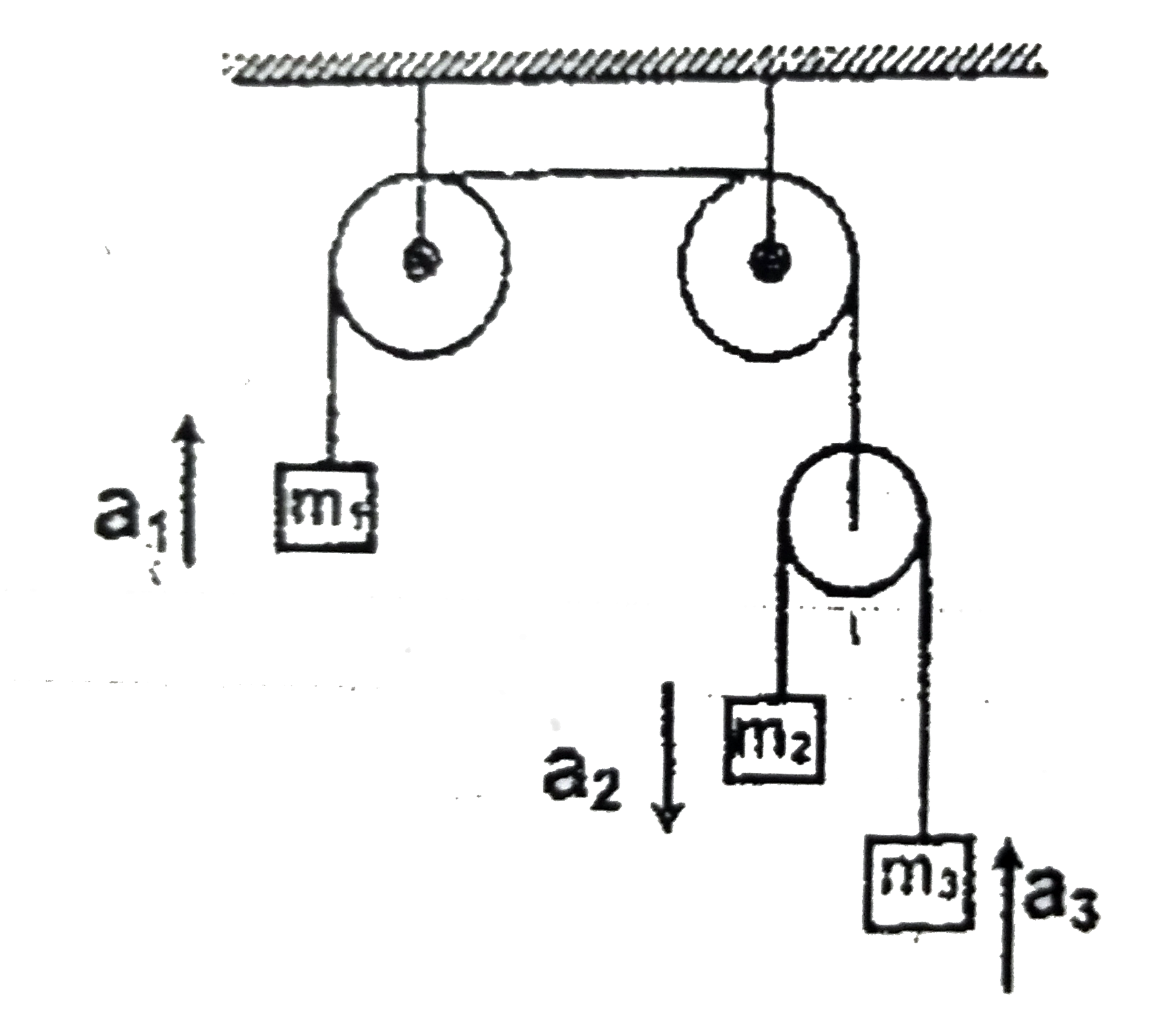 View Solution
View SolutionIf m1=10kg,m2=4kg,m3=2kg, the acceleration of system is
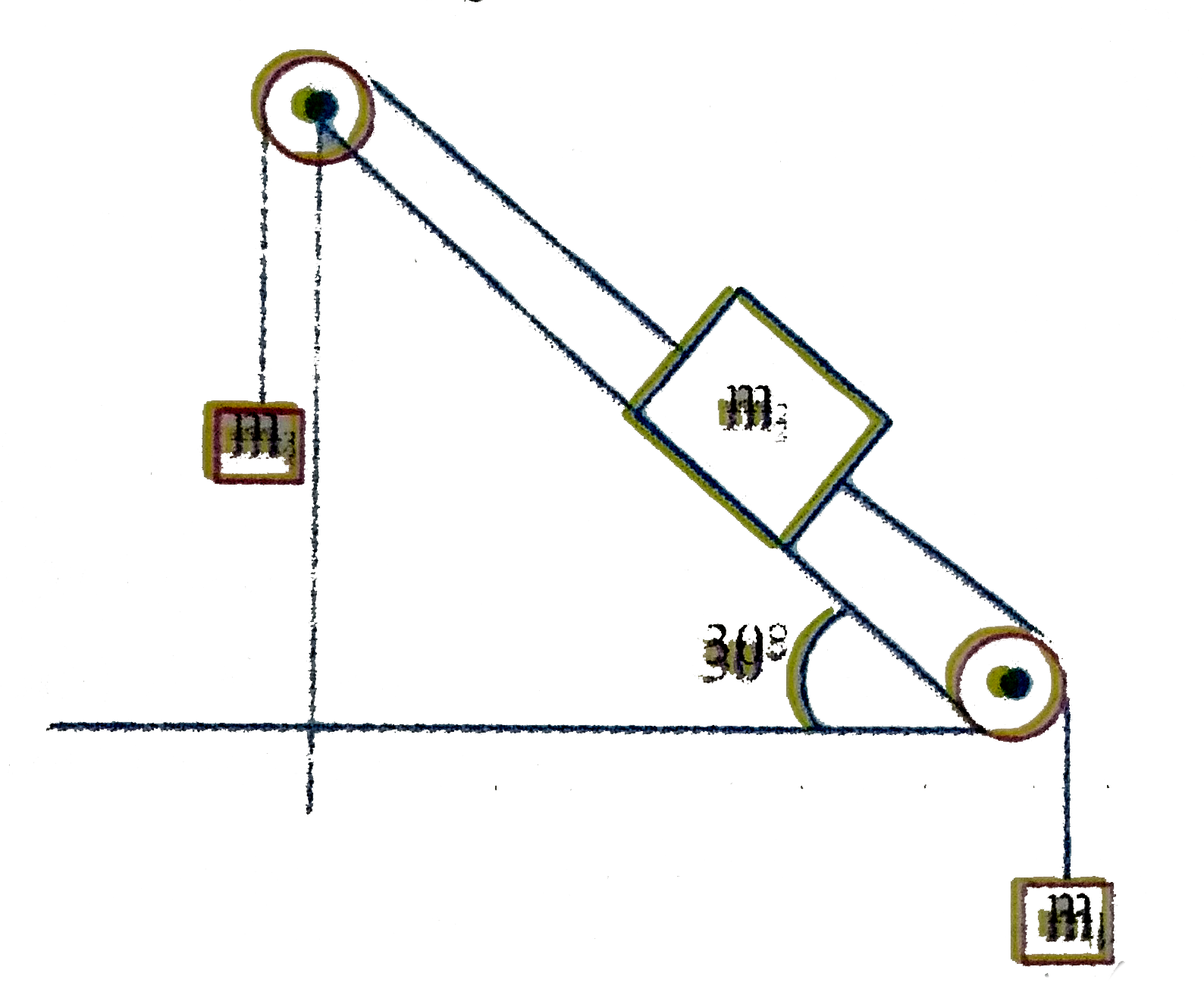 .View Solution
.View SolutionIf, in Q.19, coefficient of friction between m1 and the wall is μ,and f1 and f2 are respectively, the force of friction on m1 and m2, then :
View SolutionTwo masses m1 and m2. Which are connected with a light string, are placed over a frictionless pulley. This set up is placed over a weighting machine, as shown. Three combination of masses m1 and m2 are used, in first case m1=6kg and m2=2kg in second case m1=5kg and m2=3kg and in third case m1=4kg and m2=4kg.Masses are held stationary initiallly and then released. If the readings of the weighing machine after the release in three cases are W1,W2 and W3 respectively then:−
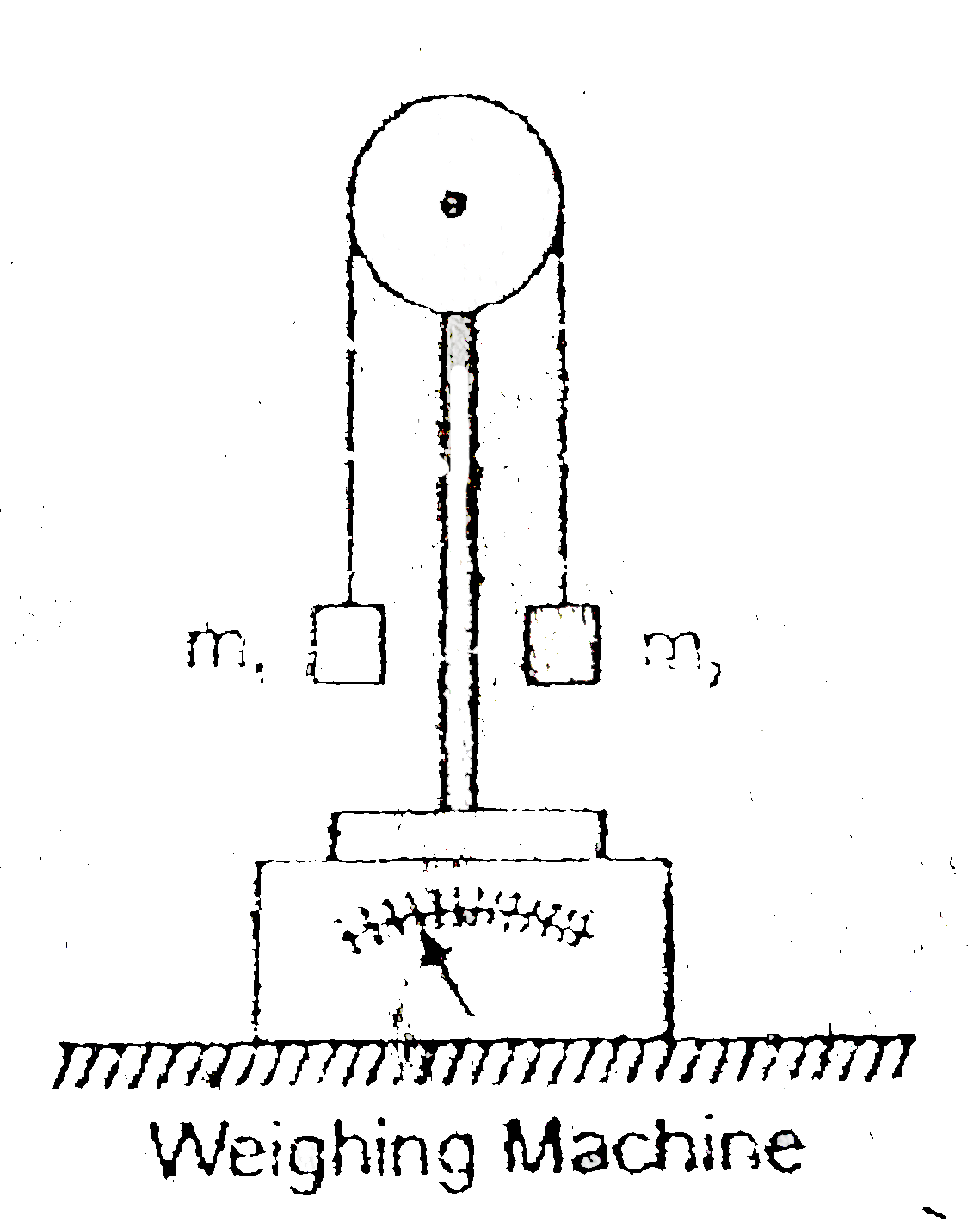 View Solution
View SolutionTwo masses m1 and m2 which are connected with a light string, are placed over a frictionless pulley. This set up is placed over a weighing machine, as shown. Three combination of mass m1 and m2 are used, in first case m1=6kg and m2=2kg, in seconds case m1=5kg and m2=3kg and in third case m1=4kg and m2=4kg. masses are held stationary initially and then released. if the reading of the weighing machine after the release in three cases are W1,W2 and W3 respectively then:
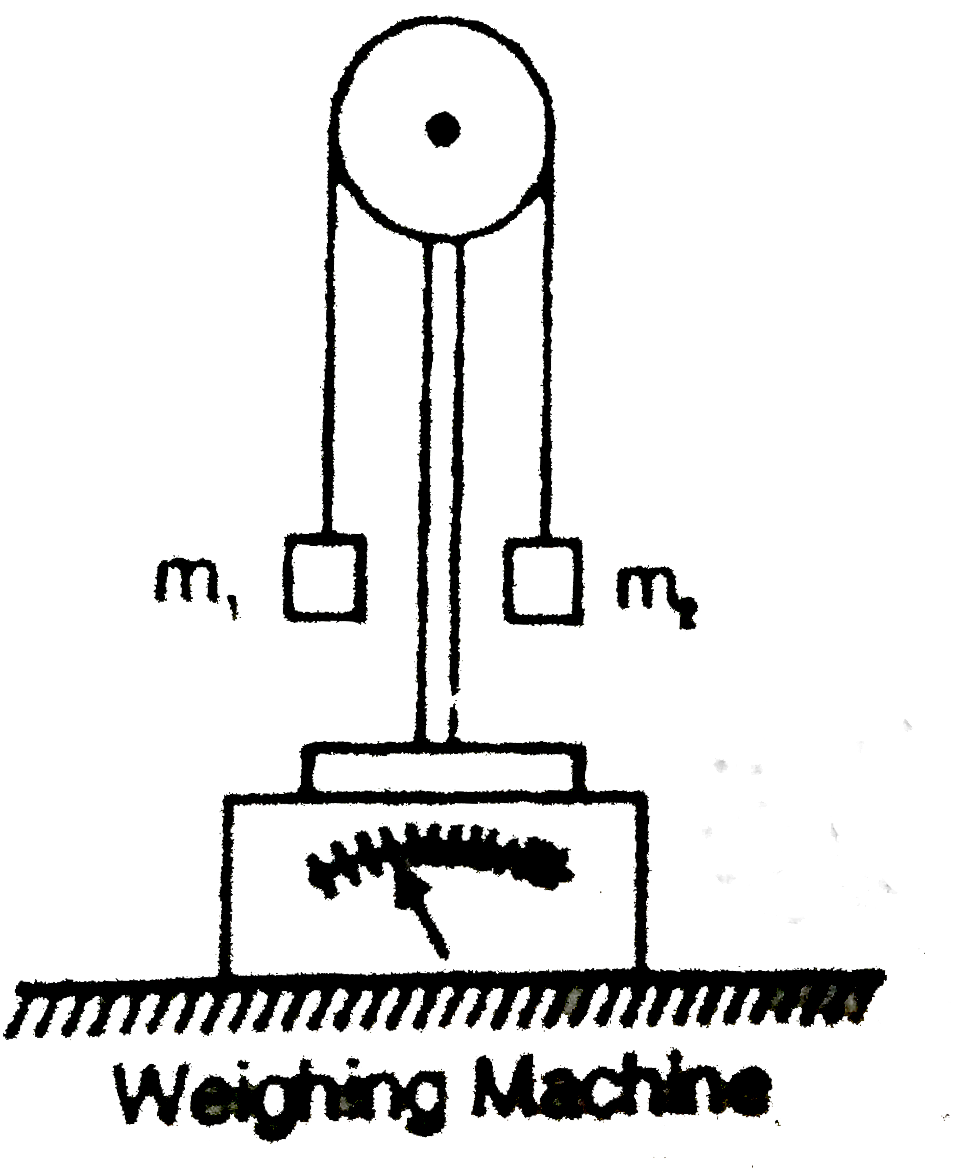 View Solution
View Solution


